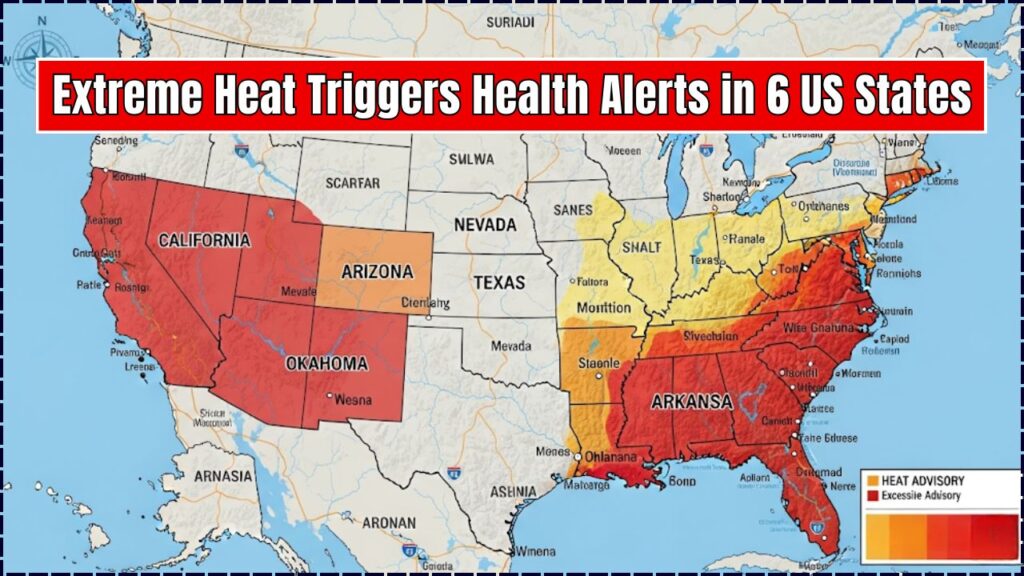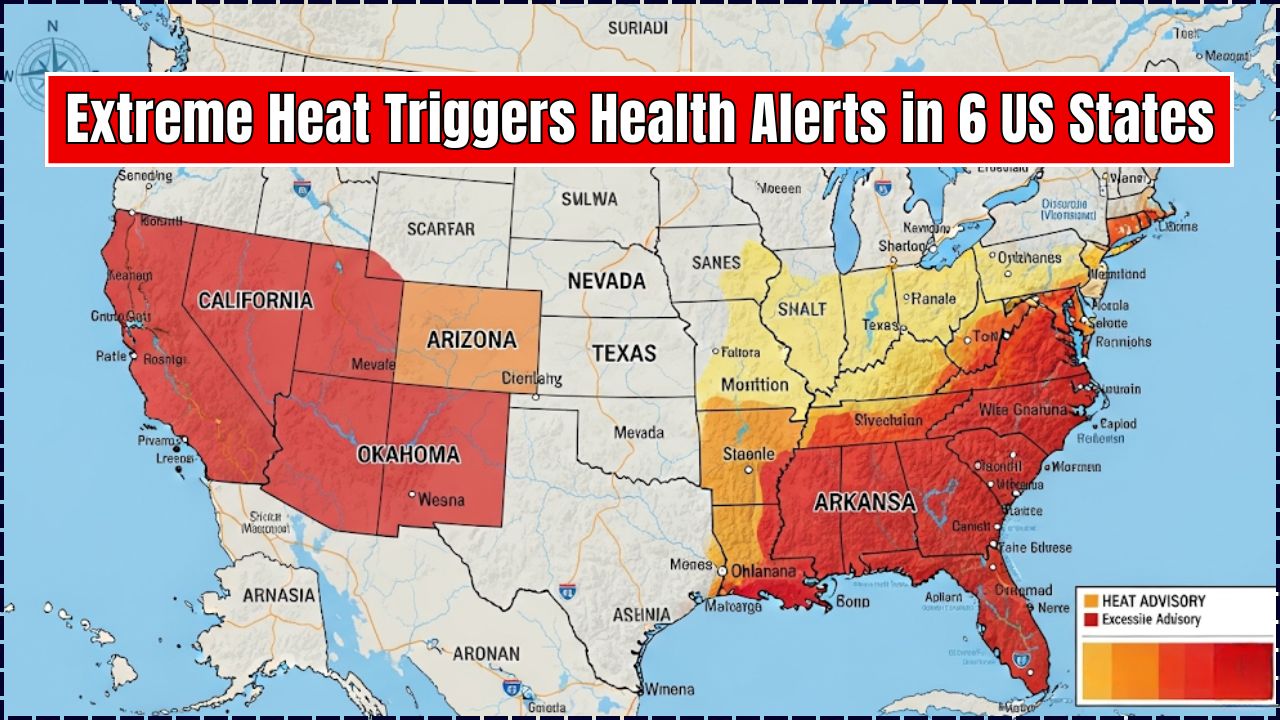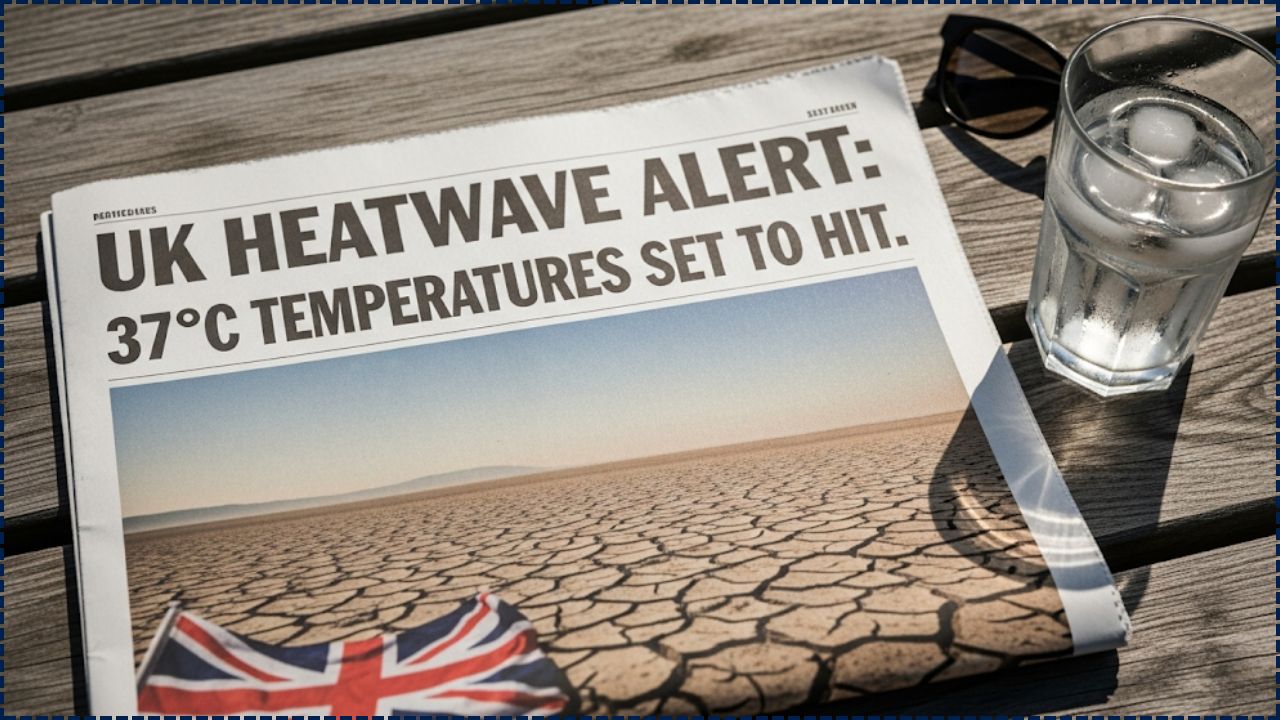Extreme heat is sweeping through the United States, and it’s more than just uncomfortable – it’s a public health emergency. In six states, health alerts have been issued as temperatures soar to dangerous levels, putting everyone at risk, from children to the elderly. Cities like Phoenix, Palm Springs, and Las Vegas are bracing for record-breaking highs, while Texans are battling brutal humidity and wildfires. In this article, we’ll break down the details, provide essential tips on how to stay safe, and dive into why these heat waves are becoming more common.

Extreme Heat Triggers Health Alerts in 6 US States
| Key Data & Stats | Details |
|---|---|
| States Affected | Arizona, California, Nevada, Texas, New Mexico, Florida |
| Record Temperatures | Phoenix: 118°F (47.8°C); Palm Springs: 108-118°F (42-47.8°C) |
| Risk Groups | Children, elderly, people with heart or lung conditions |
| Health Alerts | Issued for extreme heat and wildfire risks across several states |
| Safety Tips | Stay hydrated, avoid outdoor activities, check on vulnerable individuals |
| Official Resources | CDC Heat & Health Tracker |
| Wildfires | High risk in California and Nevada due to dry conditions and extreme heat |
Extreme heat is a serious and growing problem that affects millions across the U.S. This summer, states like Arizona, Texas, and California are facing particularly intense conditions. The combination of rising temperatures, drought, and wildfire risk makes it more important than ever to stay informed and take protective measures.
By following basic safety guidelines, staying hydrated, and knowing the signs of heat-related illnesses, you can keep yourself and your loved ones safe during this hot season. As climate change continues to worsen, the need for resilience and preparedness will only grow. Stay safe out there!
What’s Happening with the Heat Wave?
Heat waves are nothing new in the U.S., but the intensity and frequency of these extreme temperature spikes are becoming more frequent, and it’s something we need to talk about. This summer, several states are experiencing intense heat warnings that can impact everyone – from your average citizen to the professional worker. Cities in the Southwest like Phoenix, Arizona, and Las Vegas, Nevada, are expected to see temperatures well above 100°F (38°C) for days on end.
What’s particularly concerning is that these are not just your typical summer temperatures. This is the kind of heat that can cause serious health problems, including heatstroke, dehydration, and even death. Unfortunately, this heat isn’t just annoying; it’s dangerous.
The Heat Hits Different States Hard
Let’s dive into the specifics of the states affected. Here’s what you need to know:
Arizona – Phoenix and Beyond
Phoenix is having one of its hottest summers on record, with temperatures expected to reach 118°F (47.8°C). This means it’s not just the outside air that’s sweltering; it’s everything. The asphalt, the sidewalks, the air – it all radiates heat. And the thing is, Arizona is no stranger to extreme heat, but this year it’s off the charts.
- Key Fact: Phoenix is experiencing its hottest August on record.
- Practical Advice: If you’re in Phoenix, stay indoors as much as possible, especially during the hottest part of the day (10 a.m. to 6 p.m.). If you have to go outside, wear light clothing, a hat, and sunscreen, and always keep water with you.
Personal Experience: “I’ve lived in Phoenix for over 20 years, but this summer feels different,” says local resident Maria Garcia. “The heat doesn’t go away, even at night. You can feel it in your bones.”
California – The Desert Meets the Heat
Southern California is seeing temperatures soar to between 108°F and 118°F (42°C and 47.8°C), and this comes at the same time as wildfires continue to rage across the state. The combination of extreme heat and wildfire risk makes this a particularly dangerous situation. Cities like Palm Springs are sweltering, and the dry desert air is adding to the intensity.
- Key Fact: California is also facing serious air quality issues due to wildfires, with smoke and ash creating hazardous conditions.
- Practical Advice: If you’re in California, avoid going outside during heat advisories. If you must, limit strenuous activities, and keep a mask on hand to protect yourself from smoke inhalation.
Historical Comparison: In 2020, California saw a heatwave with temperatures reaching 121°F (49.4°C) in places like Woodland Hills, but this year, conditions are even more extreme. The drought is worsening, making it harder for firefighters to combat wildfires.
Nevada – Las Vegas Under the Heat Dome
Las Vegas is known for its heat, but even locals are saying this summer is something else. Temperatures in the city are pushing 111°F (43.9°C), and the dry air only makes it feel hotter. The heat in Nevada is paired with high wildfire risks, especially in rural areas.
- Key Fact: Las Vegas is facing dangerously high temperatures, which can cause heat exhaustion and dehydration quickly.
- Practical Advice: When in Vegas, stay hydrated, avoid outdoor activities during the hottest part of the day, and cool off in the many air-conditioned spaces available, like casinos, malls, or public buildings.
Texas – The “Ring of Fire”
In Texas, it’s not just about the heat; it’s the humidity. Areas like San Antonio are under a heat dome, a pattern that results in a stubborn, stagnant air mass that traps the heat and prevents rain. This can make the heat feel even more oppressive.
- Key Fact: Humidity levels in Texas are pushing the heat index well past 100°F (37.8°C), making it feel hotter than the actual temperature.
- Practical Advice: Texas residents should be especially mindful of the heat’s impact on the body. Stay in the shade, hydrate, and wear light-colored, loose-fitting clothes.
Expert Insight: “High humidity levels make it more difficult for your body to cool down, putting additional stress on the heart,” explains Dr. Jenna Morrison, a climate scientist. “This is why Texas faces one of the highest heat risks in the nation during these waves.”
New Mexico – Scorching Temperatures
New Mexico is seeing temperatures in cities like Albuquerque hit 106°F (41.1°C). Heat advisories have been issued, especially for eastern New Mexico. The state’s desert climate means there’s little relief, and the risk of dehydration is high.
- Key Fact: New Mexico’s dry air and high temperatures make it harder for the body to cool down.
- Practical Advice: Drink water consistently, avoid long periods of sun exposure, and wear a wide-brimmed hat to shield yourself from the sun.
Florida – Drought and Heat Combine
Florida is experiencing one of its worst droughts in 24 years, which is exacerbating the heat. With nearly 99% of the state affected by drought conditions, this combination of heat and dry conditions is perfect for wildfires. Florida residents need to be vigilant about water usage and outdoor safety.
- Key Fact: Florida is seeing the highest temperatures in decades, paired with severe drought conditions.
- Practical Advice: Conserve water, stay cool indoors, and keep an eye on local advisories about fire risks.
Why Is This Happening More Often?
In short, climate change. Over the last few decades, our planet has been warming up, and that’s making extreme weather events, like heatwaves, more common. The U.S. is seeing these temperature spikes more often, and they’re lasting longer. According to the National Oceanic and Atmospheric Administration (NOAA), summers are expected to continue getting hotter, and the risk of extreme heat events will rise.
What Can We Do About It?
Personal Safety
It’s crucial to stay cool and hydrated during extreme heat. Here’s how to stay safe:
- Hydrate: Drink water throughout the day, not just when you’re thirsty. Avoid alcohol and caffeine, as these can dehydrate you.
- Limit Physical Activity: If you must exercise, do it during the early morning or late evening when the sun is less intense.
- Cool Down: Use fans or air conditioning. If you don’t have access to either, find a public space like a library or mall to cool off.
Community & Work Safety
For those working outdoors or in hot environments, take extra precautions:
- Breaks: Make sure to take frequent breaks in shaded or air-conditioned areas.
- Wear Protection: Light-colored clothing, wide-brimmed hats, and sunscreen are must-haves when working outdoors.
FAQs
1. What are the symptoms of heat exhaustion?
- Heat exhaustion can include symptoms like heavy sweating, weakness, dizziness, nausea, headache, and muscle cramps. If you experience these symptoms, get to a cooler place, hydrate, and rest.
2. Can pets be affected by extreme heat?
- Yes! Pets can overheat quickly. Never leave pets in a hot car, and make sure they have access to plenty of fresh water and shaded areas.
3. How long do heat advisories typically last?
- Heat advisories can last anywhere from a day to several days, depending on the intensity of the heat and the region. Always check your local weather service for updates.
4. Why is extreme heat dangerous?
- Extreme heat puts extra stress on the body, particularly the heart and lungs. It can lead to heat exhaustion or heat stroke, which can be fatal if untreated.












